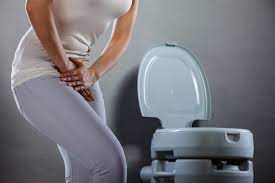Normal bladder function is the result of a complex interaction of neurological and psychological factors, as well as musculoskeletal and renal function. The combination of these physiological mechanisms, some voluntary and some involuntary, determines the filling of the bladder and emptying - at the appropriate times and in the appropriate places. Even one problem at different levels of this system can contribute to overactive bladder syndrome. Urinary urgency is often associated with overactivity of the detrusor muscle .
Overactive bladder syndrome is a urological disorder defined by a pattern of symptoms (such as an urgent need to urinate) that are independent of other pathologies with similar presentations, including bladder tumors, infections or obstructive urinary tract diseases. Frequent urination may be accompanied by urinary incontinence and occur throughout the day or only at night.
What is contributing to the problem? A number of factors can contribute to an overactive bladder. First, there is high diuresis, which occurs with excessive fluid intake, poor kidney function or diabetes; bladder abnormalities such as tumors, bladder stones or other factors that interfere with normal outflow - an enlarged prostate, constipation or previous urogynecological surgery. In men, overactive bladder syndrome is most often associated with benign prostatic hypertrophy. Also, do not discount changes in the sensitivity of the bladder wall; weakness of the pelvic muscles due to pregnancy and childbirth; neurological disorders such as Parkinson's disease, stroke and multiple sclerosis.
Overactive bladder may be a manifestation of central nervous system injury, trauma, or iatrogenic spinal injury. Taking diuretics and drinking too much caffeine or alcohol can cause a rapid increase in urine production. Acute urinary tract infections cause symptoms similar to those of an overactive bladder because they can irritate nerves and cause the urge to urinate. Excess weight increases intra-abdominal pressure, which can eventually fatigue the urethral sphincter and cause urine loss. Also, estrogen deficiency after menopause can contribute to urine leakage .
How to diagnose overactive bladder? The diagnosis is made after excluding other relevant pathologies such as urinary tract infections, lower urinary tract obstruction and bladder tumors. Diagnostic examination at Bogolyuby MC usually includes: physical examination of the abdomen and genitals , rectal examination in men (to assess the size, consistency and total mass of the prostate) and pelvic examination in women (to assess atrophy, inflammation, infections); in men, PSA measurement; urinalysis and urine culture. To measure the amount of urine that is not being passed , your doctor may do an ultrasound of your bladder.
How to help?
Currently, the most effective pharmacological class for symptoms of overactive bladder syndrome is antimuscarinic drugs . They act on the detrusor muscles of the bladder wall, having a positive effect on reducing involuntary contractions and episodes of urinary incontinence.
After confirming the diagnosis, the first thing to do is change your lifestyle. These interventions do not lead to complete resolution of the disorder, but can significantly reduce the number of incontinence episodes. Behavioral interventions may include weight loss, elimination of urinary irritants. Kegel exercises will help strengthen your pelvic floor and bladder sphincter muscles.

















